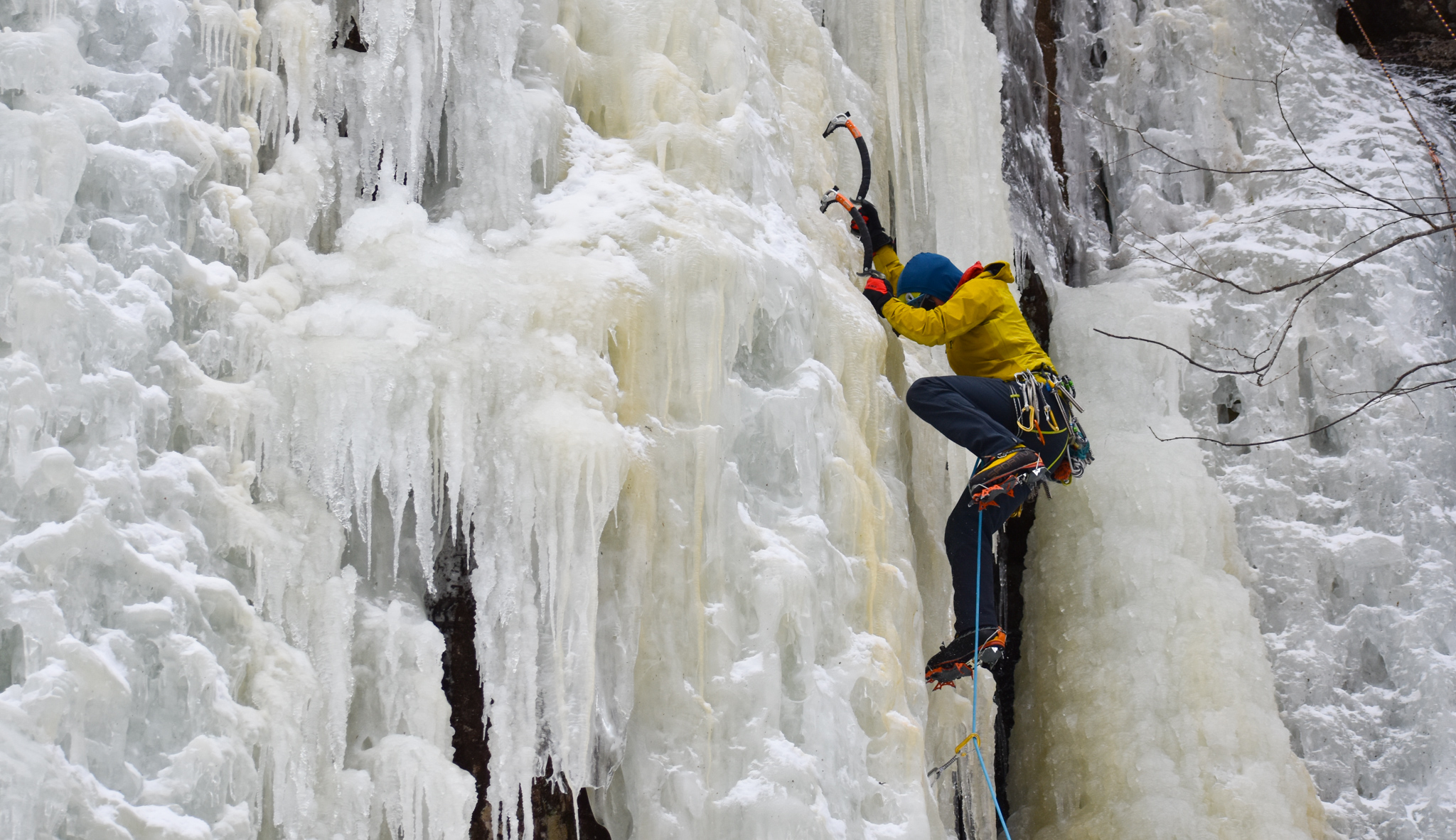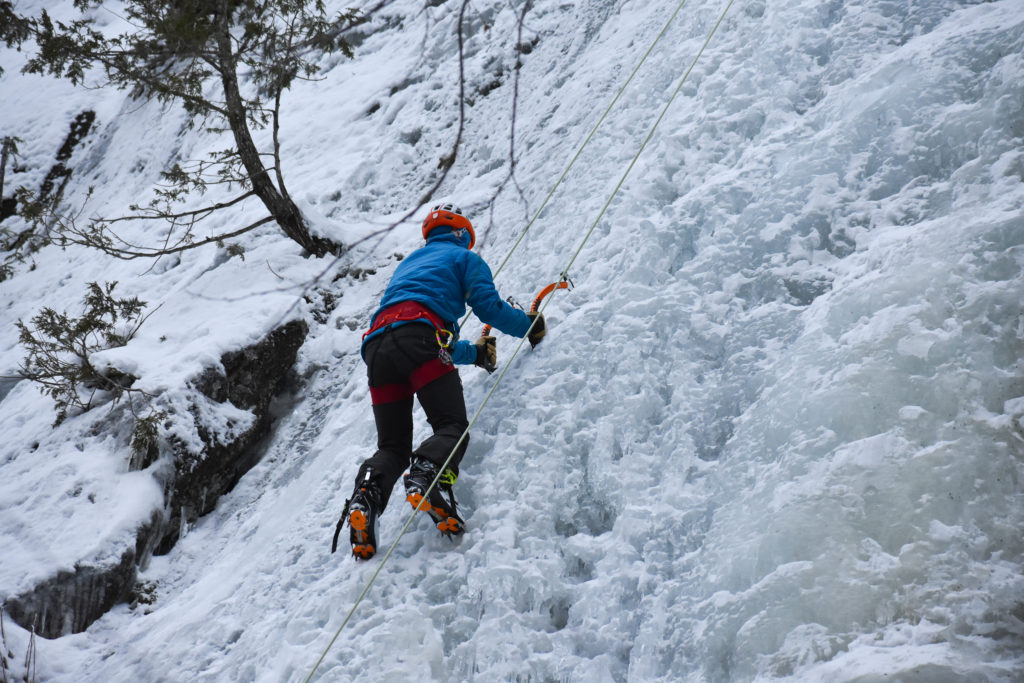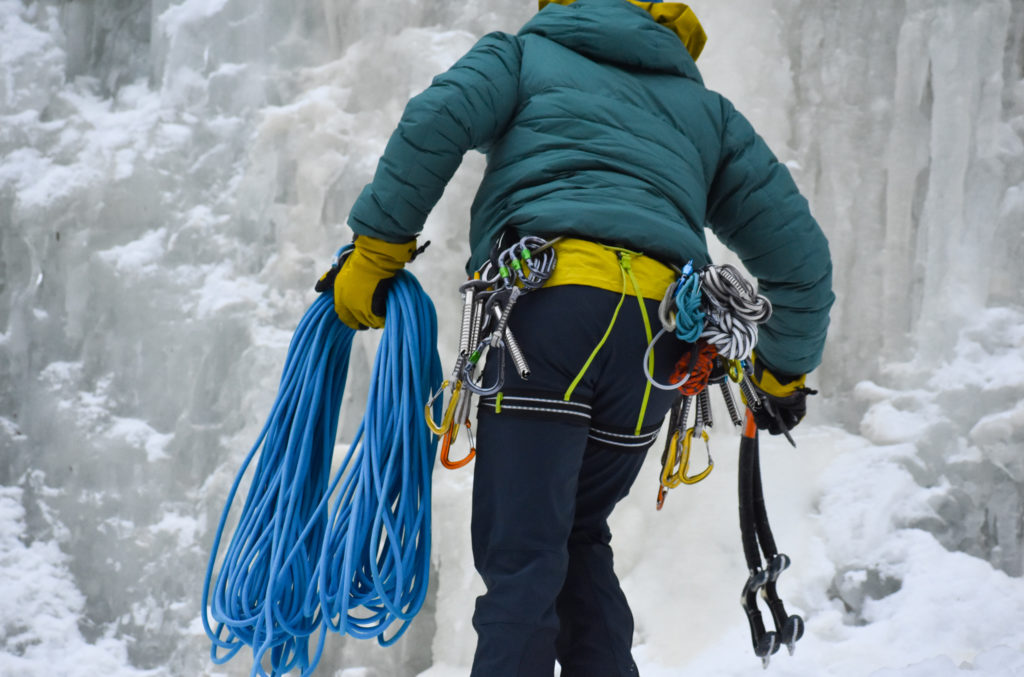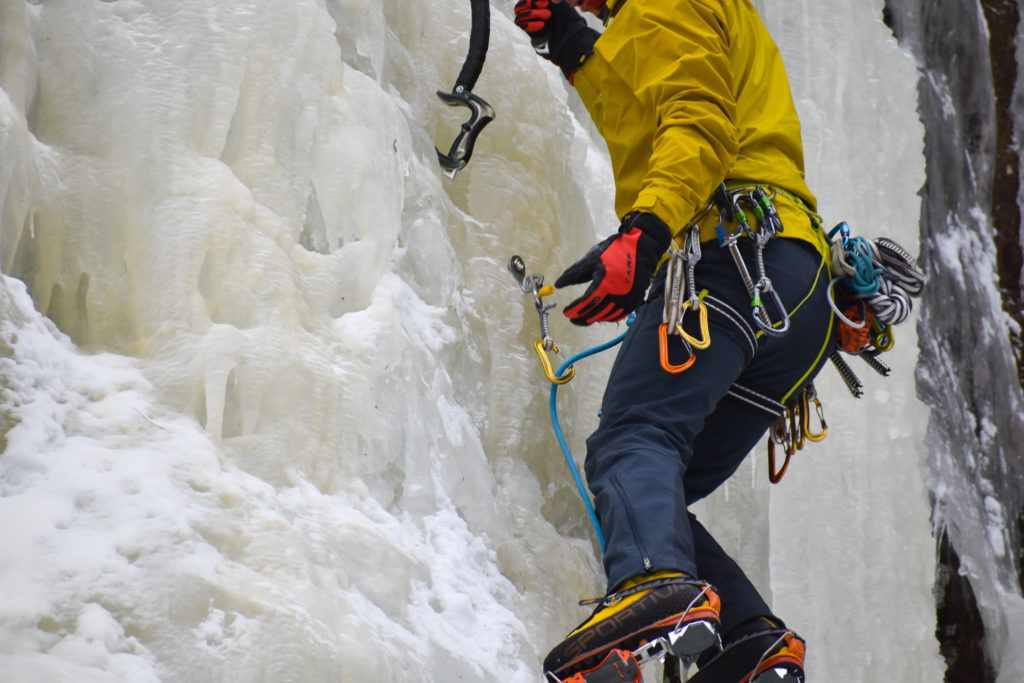Skills & Techniques
Ice Climbing Etiquette


Ice climbing is a unique and invigorating activity that is growing in popularity. As more people discover the sport, ethics and etiquette become increasingly important. Here are 8 Leave No Trace tips for practicing ice climbing etiquette.

1. Limit Overcrowding:
Carpooling alleviates congested parking lots and helps save room for others. Consider splitting into smaller groups to reduce overcrowding at popular climbs.
2. Leave a Note:
Leave a note on your car with route name, party size, and time. This helps other climbers plan their day and make better decisions about which route to approach. Additionally, have a back up plan for yourself in case your intended route is occupied.

3. Share the Ice:
Be respectful to other visitors and take turns on routes. Being patient and courteous can keep a cooperative spirit and help protect the quality of everyone’s experience. Avoid loud noises and music so that nature’s sounds prevail and other climbers can hear important belay calls.
4. Never Climb Below:
Falling ice is inevitable. Climbing underneath or passing another team puts all parties at serious risk. It’s best to avoid these situations by waiting your turn or finding a different route.
5. Keep the Area Clean:
Nobody wants to step in a yellow snow cone. Urinate 70 big steps (200ft) from the base of climbs, water (even if frozen), campsites, and trails. The winter can be a challenging time to dig a proper cathole. When the ground is frozen or covered in snow, it is best to pack it out solid waste using a WAG Bag. Additionally, remember to pack out all trash including food scraps.

6. Be Nice to the Ice:
Be prepared to turn your ice climbing trip into a day hike if you find that the ice is too delicate to climb. If the ice is fragile or delicate, climbing can cause significant damage to a route and change its desired character.
7. Avoid Leaving Gear:
When finishing a route or bailing on a climb, consider techniques that leave nothing behind. This way you can prevent your cordelette from becoming litter in the spring. If the situation necessitates leaving gear, try using neutral colors to maintain the natural aesthetic of the area.

8. Learn the Local Ethics:
There are ice climbing areas all around the world. Each route, area, or region may have different preferred practices and etiquette. In some areas, lead climbers have the right away over top ropes or dry tooling may be discouraged. Take time to learn about local practices by talking with gear shops, climbers, and guides in the area.
Are you psyched to try ice climbing or another winter sport? Check out these additional Leave No Trace Tips for Winter Recreation to help you Enjoy Your World and Leave No Trace!
Leave No Trace’s Cameron Larnerd and Nick Whites are part of the 2020 Subaru/Leave No Trace Traveling Trainer Program that provides free, mobile education to communities across the country. Proud partners of this program include Subaru of America, REI, Eagles Nest Outfitters, Deuter, Thule, Fjällräven and Klean Kanteen.
Related Blog Posts
Let’s protect and enjoy our natural world together
Get the latest in Leave No Trace eNews in your inbox so you can stay informed and involved.

